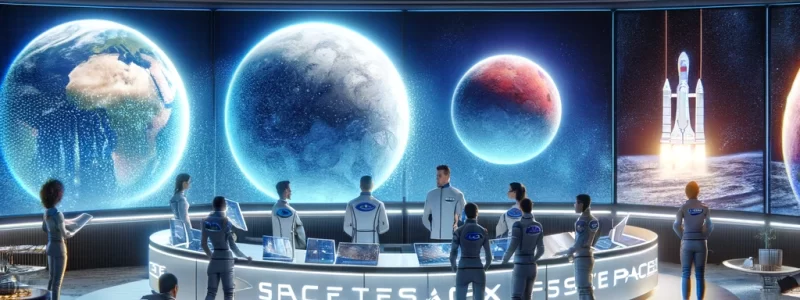
Space tourism
Highlights
1. Sam Altman expects AI agents to be the next big thing.
2. ChatGPT adds a memory persistent across conversations.
3. Vidu, a text-to-video tool, may become a competitor of Sora.
4. GitHub Copilot Workspace allows developers to manage software development with natural language.
5. Amazon Q chatbot simplifies the development of AI-driven applications.
6. The SpaceX website adds space tourism options.
Innovation Insights
1. Sam Altman says helpful agents are poised to become AI’s killer function (MIT Technology Review)
Sam Altman envisions a future where AI seamlessly integrates into our daily lives as an autonomous and highly knowledgeable assistant. Agents will manage real-world tasks without necessitating new hardware or significant increases in training data.
2. Financial services’ deliberate approach to AI (MIT Sloan)
The financial services industry is focusing on augmenting employee tasks, with early applications in back-office automation, data visualization, and fraud prevention. Regulatory requirements slow the deployment of customer-facing AI applications, demanding explainability and accuracy to satisfy stringent oversight, particularly in decisions that directly affect consumers.
3. GenAI can help companies do more with customer feedback (Harvard Business Review)
Companies are finding that “voice of the customer” applications are a practical starting point for deploying generative AI. Generative AI excels in parsing, analyzing, and responding to customer communications across various channels, improving efficiency in transcription, sentiment analysis, and interaction personalization, leading to significant time savings and more accurate customer insights.
AI Innovations
1. Anthropic
Anthropic launches Claude 3-powered iPhone app and Claude Team plan (Anthropic).
2. ChatGPT memory
ChatGPT can now maintain a persistent memory across conversations, enhancing its responses by remembering details from past interactions, which users can manage or delete through their settings (OpenAI).
3. Text to video
Shengshu Technology, in collaboration with Tsinghua University, launched Vidu, a text-to-video AI tool similar to OpenAI’s Sora, capable of generating 16-second videos at 1080p resolution from text prompts (South China Morning Post).
4. GitHub Copilot Workspace
GitHub has launched the technical preview of GitHub Copilot Workspace, a Copilot-native developer environment that enables developers to manage the entire software development process—from planning to execution—using natural language (GitHub).
5. Medical treatment
Researchers have developed an AI model that simulates randomized clinical trials to determine the best treatment options for preventing strokes in heart disease patients. Their model, pre-trained on extensive de-identified patient data and further refined with specific health condition information, is aligned closely with the recommendations of actual clinical trials (Ohio State University).
6. Amazon Q chatbot
Amazon is expanding its enterprise AI offerings with its AI chatbot Q, now made more widely available and enhanced with new features like Amazon Q Apps, which simplifies creating AI-driven applications (The Verge).
7. Nvidia chatbot
Nvidia has enhanced its ChatRTX chatbot to support more AI models including Google’s Gemma and OpenAI’s CLIP, catering to RTX GPU owners by allowing them to run powerful AI tools locally on their PCs. Additionally, ChatRTX now includes voice query capabilities through the integration of the Whisper AI speech recognition system (The Verge).
Other Innovations
1. Space industry
Portal Space Systems has introduced Supernova, an innovative spacecraft designed for enhanced mobility in space, capable of transitioning from low Earth orbit to geostationary orbit quickly due to its novel solar-thermal propulsion system (TechCrunch).
SpaceX has introduced bookings for space tourism, offering trips to Earth orbit starting this year and flights to the International Space Station by 2025. The website lists four potential destinations—Earth orbit, the ISS, lunar orbit, and Mars—with detailed information about mission specifics, research opportunities, and amenities for passengers (SpaceX).
2. Cancer vaccines
Personalized cancer vaccines are showing renewed promise, with Moderna and Merck’s large clinical trials in the UK targeting specific mutations in melanoma and lung cancer tumors. These vaccines aim to teach the immune system to recognize and attack cancer cells by identifying and using mutated proteins (neoantigens) present on cancer cells (MIT Technology Review).
3. Robotic cooking
Stardust unveiled its AI robot, Astribot S1, designed for a combination of wheeled and humanoid features, primarily for research purposes and capable of performing complex tasks with human-like agility and flexibility. The S1 robot demonstrated its capabilities in a variety of tasks, from household chores to cooking (Startups Win).
4. Blood type
Matching the blood types of donors and recipients is essential in blood transfusions. A promising approach to overcome blood type mismatches involves using enzymes from the gut bacterium Akkermansia muciniphila to modify specific sugars on red blood cells. This treatment could greatly simplify blood transfusion procedures and enhance safety by making all donated blood universally compatible (Nature Microbiology).
5. Quantum computing
Recent breakthroughs in quantum computing, particularly in error correction and qubit stability, are revitalizing investment and development in the sector. With significant financial backing, such as Australia’s $620 million investment in the U.S. startup PsiQuantum, there is now a clear path toward building large-scale, commercially viable quantum systems within the decade (Financial Times).


